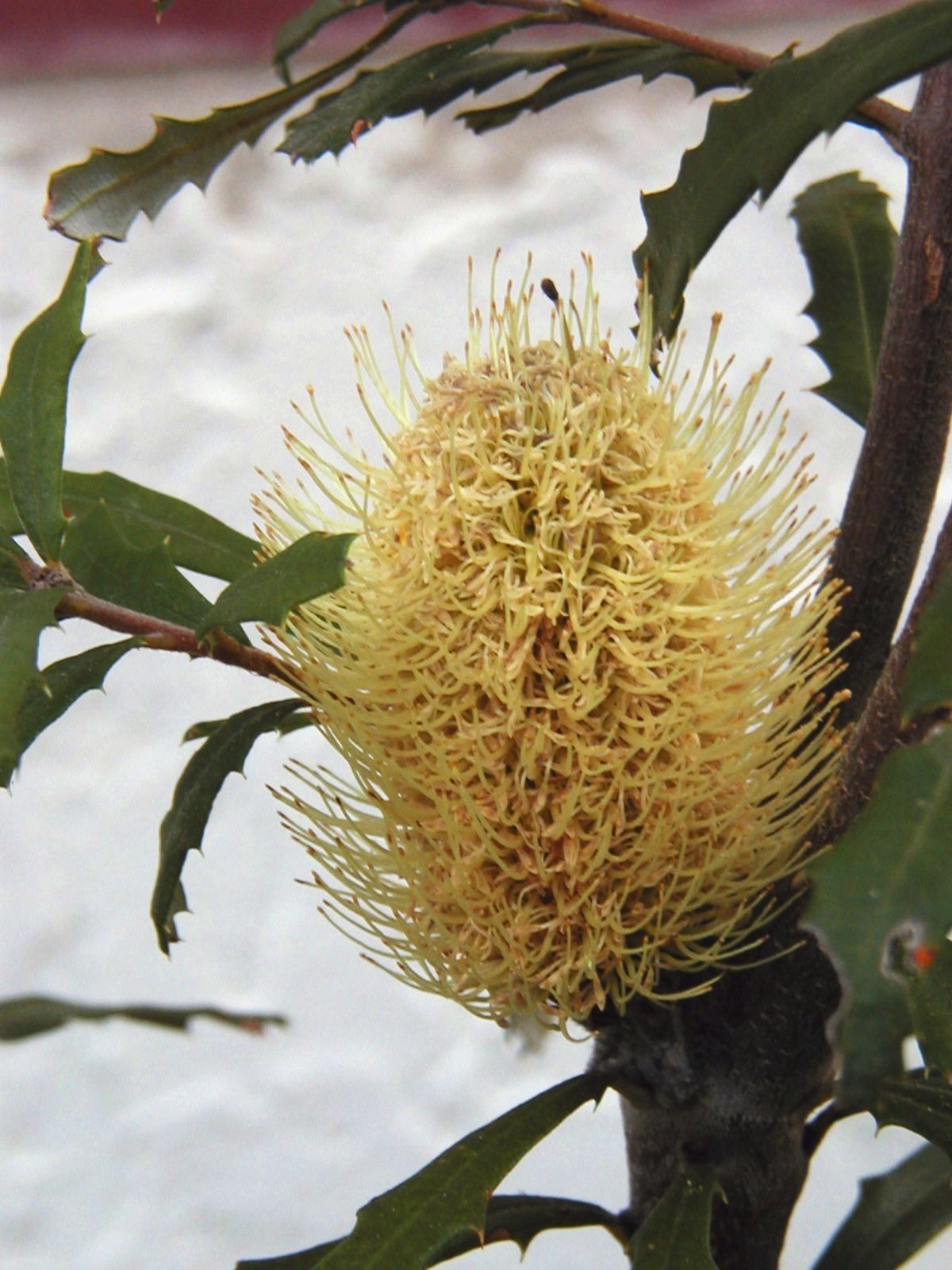Banksia canei
(Banksia canei)

Description
The mountain banksia (Banksia canei) is a species of shrub in the plant genus Banksia. It occurs in subalpine areas of the Great Dividing Range between Melbourne and Canberra in southeastern Australia. Although no subspecies are recognised, four topodemes (geographically isolated populations) have been described, as there is significant variation in the shape of both adult and juvenile leaves between populations. Although superficially resembling B. marginata, it is more closely related to another subalpine species, B. saxicola. Banksia canei is generally encountered as a many-branched shrub that grows up to 3 m (10 ft) high, with narrow leaves and the yellow inflorescences (flower spikes) appearing from late summer to early winter. The old flowers fall off the spikes, and up to 150 finely furred follicles develop, which remain closed until burnt in a bushfire. Each follicle bears two winged seeds. Response to fire is poorly known, although it is thought to regenerate by seed. Birds such as the yellow-tufted honeyeater and various insects forage among the flower spikes. It is frost tolerant in cultivation, but copes less well with aridity or humidity, and is often short-lived in gardens. One cultivar, Banksia 'Celia Rosser', was registered in 1978, but has subsequently vanished.
Taxonomic tree:







